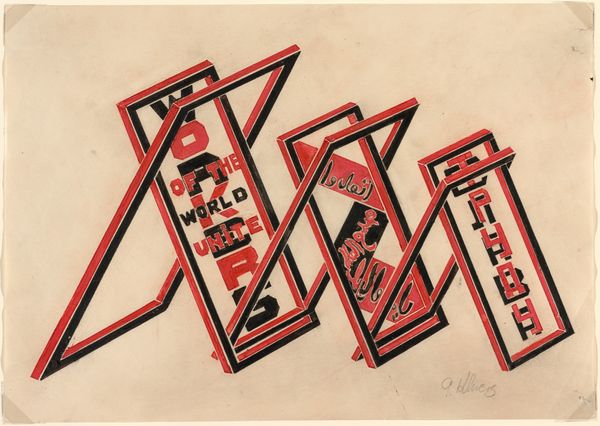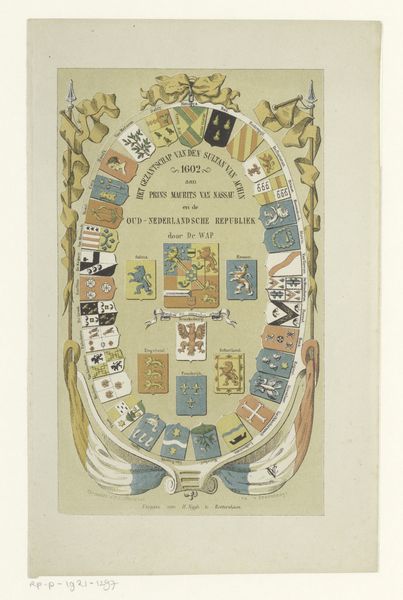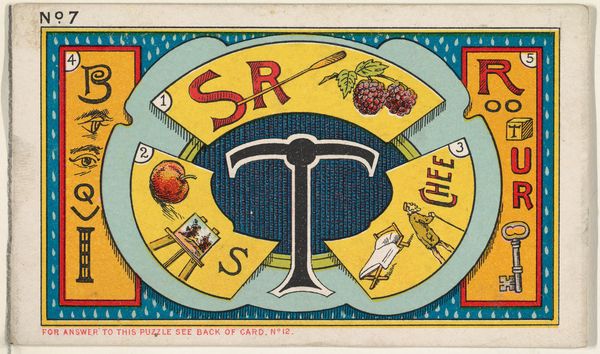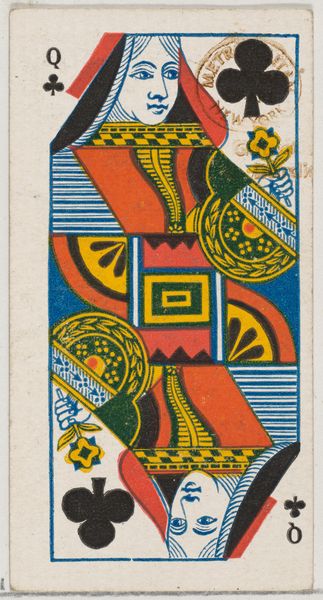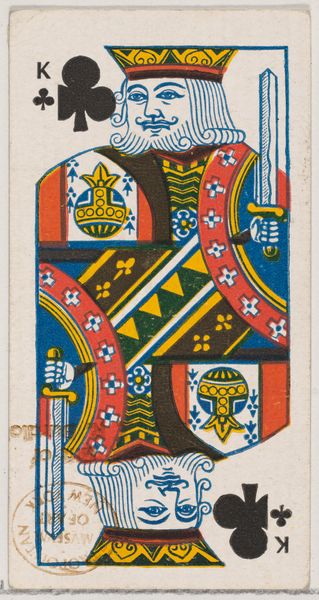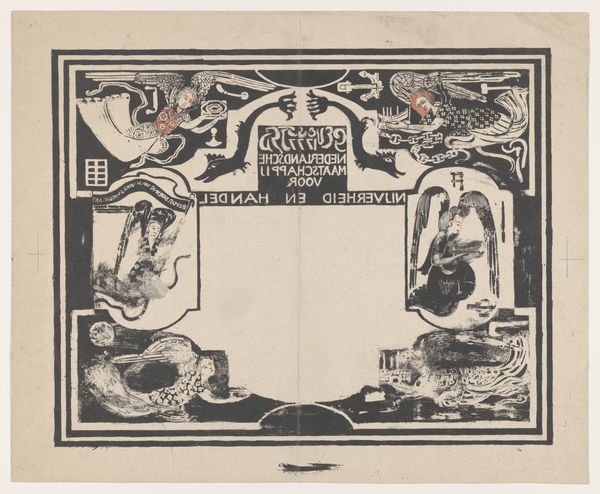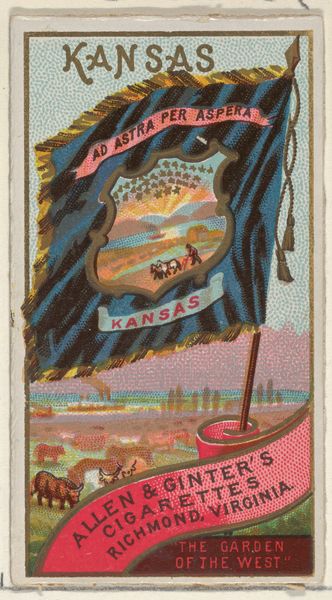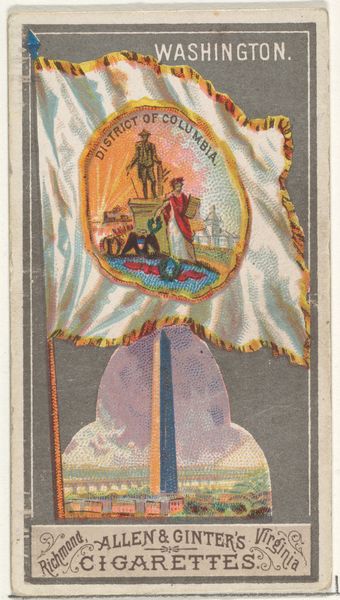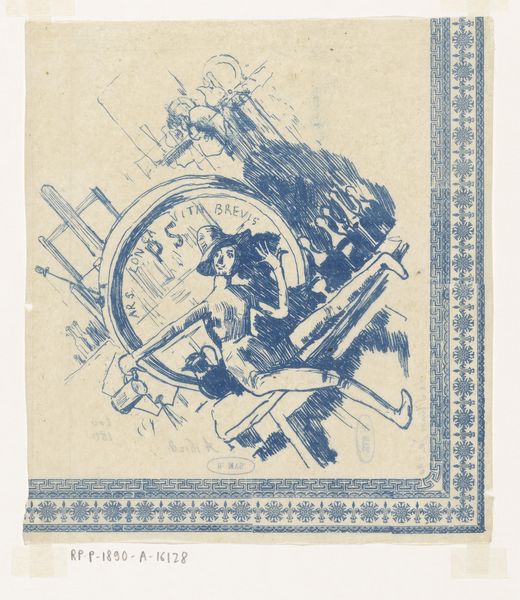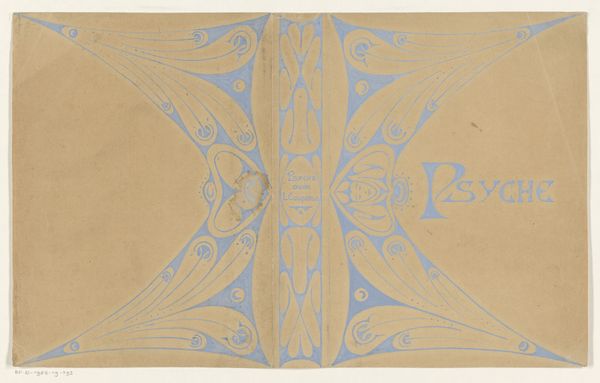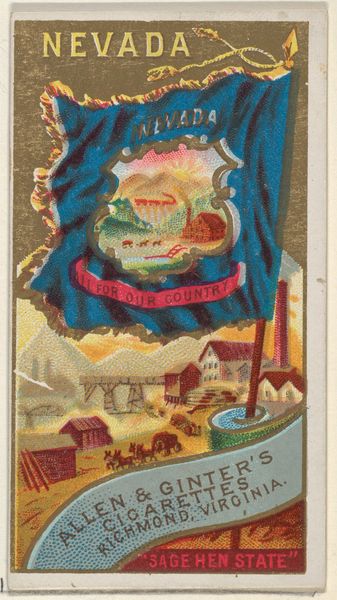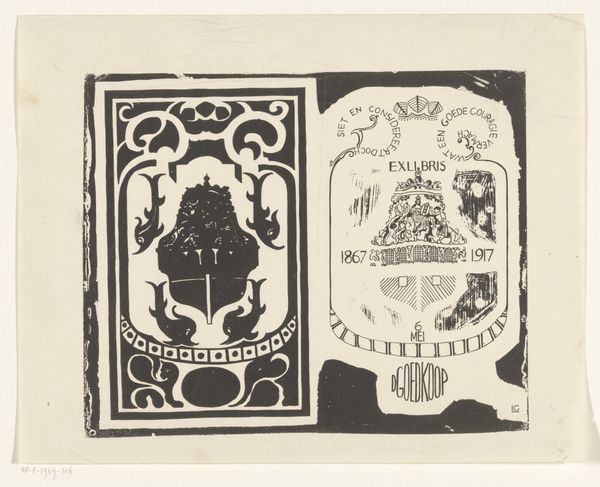
Puzzle Card Number 15, "Base Ball" Puzzle, from the Jokes series (N118) issued by Duke Sons & Co. to promote Honest Long Cut Tobacco 1887 - 1891
0:00
0:00
Dimensions: Sheet: 4 1/4 × 2 1/2 in. (10.8 × 6.3 cm)
Copyright: Public Domain
Editor: So this is "Puzzle Card Number 15, Base Ball Puzzle," part of the Jokes series printed between 1887 and 1891 by Duke Sons & Co. It’s a tobacco advertisement presented as a visual puzzle. I'm struck by how playful it is, given its commercial purpose. What do you see in it? Curator: I see a potent symbol of cultural and economic forces at play. This isn't just a playful puzzle; it’s a carefully constructed image embedded in the context of late 19th-century capitalism, leisure, and burgeoning mass media. Editor: Could you elaborate on that? Curator: Absolutely. Consider the act of combining a leisurely activity, baseball, with the consumption of tobacco. What values are being normalized here? Think about who had access to leisure activities and the emergent forms of advertising that aimed to capture a wider consumer base. This card promotes Honest Long Cut Tobacco by visually engaging the potential buyer. How might that appeal speak to notions of class and aspiration at that time? Editor: I see what you mean. It's more than just a game; it's about who gets to play and what they’re buying into. The illustration itself reminds me of Ukiyo-e prints. Was that intentional? Curator: It could well be. There's an aesthetic appropriation happening, linking "exotic" art forms with American commercial interests. What does that cultural exchange signify to you? Editor: Hmmm, perhaps how mass-produced advertisement appropriates high art and global culture to associate baseball with positive cultural values? Curator: Precisely! It brings into view how cultural symbols and artistic traditions are employed to shape consumer desires and maintain certain societal hierarchies. Editor: That makes me rethink the image completely! I went from seeing a vintage baseball card to recognizing the layers of cultural significance baked into it. Curator: Indeed, and that’s the power of seeing art within its complex historical context.
Comments
No comments
Be the first to comment and join the conversation on the ultimate creative platform.
